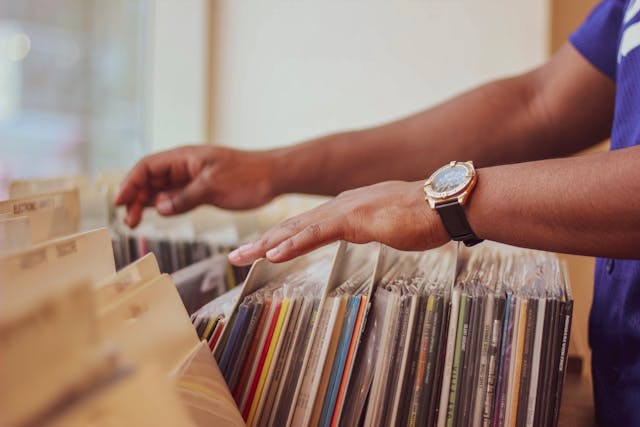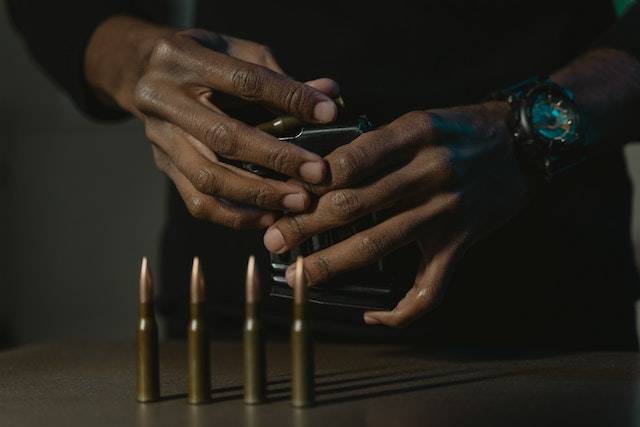The Lure of Collecting Jazz Albums
I am often asked by newer jazz fans for advice on collecting good or classic jazz records. My answer; “only you can decide what a classic is“ and “it depends on the path of collection you choose to adopt.” A jazz collection without the Miles’ Kind of Blue, Coltrane‘s Giant Steps, Hancock‘s Maiden Voyage, Blakey and the Jazz Messengers‘ Moanin’, Mingus‘ Mingus Ah Um, or Brubeck‘s Time Out albums may attract little interest, an unsolicited lecture or even ridicule. Owning Dolphy’s Out to Lunch, Ornette’s The Shape of Jazz to Come, Jarret’s The Koln Concert or Terry’s Haig and Haig albums can bring you instant respect from many. Such shows a well-defined culture of acquisition that transcends the sounds of jazz.
We often confront collectors with the niggling question, what is (classic) jazz? The battle of taste between the uncompromising purists and the liberal pluralist is perpetual. Assume jazz music is a perfect circle. Purists claim to occupy the space closest to the centre, the nucleus: Louis Armstrong, Duke Ellington, Count Basie, Billie Holliday, Charlie Parker, Dizzy Gillespie, Thelonious Monk, Miles Davis, John Coltrane, and Tubby Hayes fans. The push of pluralists, with hostility, towards the perimeter of jazz because of their eclectic “adulterations”: Electric Miles, Tantric Coltrane, commercial Grover Washington Jr, Weather Report, Return To Forever, Fela, Tom Jobim, Jacques Loussier and Incognito.
Pardon the omissions, there is a whole cosmos of jazz artists I have not mentioned. Chet Baker, Gerry Mulligan, Clark Terry, Gil Evans, Dexter Gordon, and Woody Shaw, then George Benson, Bob James, Freddie Hubbard, Spyro Gyra, and the Crusaders have to be on the lists. Expanding the lists though only creates more discontent. Why the omissions of the artists Art Blakey, Lee Morgan, George Russell, Wayne Shorter, Earl Klugh, Charles Mingus, and the Brecker Brothers? Just another big contention in purist and pluralist debate. Purists and pluralists have their classics. Many have favourites on each side. Jazz is supposed to be the embodiment of freedom, after all. Some may counter with the argument, a proper democracy expresses human freedom, an inverted totalitarian democracy is thoroughly undemocratic. Who could argue with that?
I once befriended a woman who had countless female jazz vocalist classic records from Ella to Esmeralda, Nina to Norah and Billie to Amy, but no male singers. She made me realise what I was missing. I have seen people start their collection with Miles Davis’ albums then diffuse their interests into the music of his luminary side-men. I have also seen some people who await the Grammy Awards, DownBeat polls and similar to buy their records. Some guys buy mostly chart-topping new-release albums and Editor’s choices. Other guys hunt and travel to collect classic jazz albums from the ‘40s and ‘50s. A savvy collector would have tried many leads before acquiring the discrimination to buy well.
“One million copies sold” is a phenomenon rare in jazz, but it is not a reliable measure of musical quality or staying power. Mediocre art can draw on bountiful rewards while genuine masterpieces get ignored or only rediscovered long after the fact. Classics have to pass the test of time. Artworks panned or ignored by the critics and visited by commercial failure can undergo a most contrary revaluation. While some classics standalone, others need the support of a whole body of work to shine through.
They did not take seriously the trumpeter Lester Bowie and his band the Art Ensemble of Chicago as jazz musicians, especially in the USA; their home country. On his death in 1999, Bowie became an instant legend. You may consider the jazz recordings discarded in vaults for thirty or forty years, only to be released, critics hailing and fans buying. One may wonder how many jazz classics audiences never get to hear, well, in their lifetime. The Chicagoan who missed Mile’s Davis late December 1965 gig because he had to attend his niece’s wedding in St Louis would have to wait till 1987 to hear it if no bucket trips him over. More tragic are the classics that fade from the collective unconscious because no one discusses them anymore. “Underrated” and “obscure” are euphemisms for “forgotten.”
The vanity of collecting jazz records is unspoken. People collect items with various intentions. One reason I would not part with my vinyl albums is their cover art. The impressions of the cover photographs of Miles Davis’ E.S.P. or Hancock’s Inventions and Dimension albums are poetic. The psychedelic art of Weather Report’s Heavy Weather or Miles’ Bitches Brew is mind-blowing. Blue Note albums have intimate portraits of musicians on the sleeves. The text lettering of Ornette Coleman’s Free Jazz album exemplifies the finesse of simplicity. Then there is the perennial debate of the look of a jazz genius; Coltrane’s Love Supreme and Monk’s Monk’s Dream album sleeves win. Collecting jazz records is many a time also collecting visual art. For me, it was unconscious till I woke up to it.
Many people had three options in collecting jazz records when I started. The first was recommendations from family, friends, and strangers. It was always helpful if older persons in your household had a good collection. The second was to look through record label catalogues. Blue Note, Columbia and Atlantic led the pack in that department. You could listen to them in jazz records shops – many do not exist anymore. The third option was through sheer serendipity. You heard the music somewhere (TV, radio, the high street, a friend’s party), liked it and got its details – if you could.
I started collecting jazz albums, both vinyl LPs and CDs in the 1980s. By the year 2000, I owned over four hundred albums. I predicated strictly my initial collection on the Blue Note and Columbia Records labels. I then added the labels Atlantic and Impulse! As my interest in jazz grew, my collecting habits became less label driven. Beyond the big labels, classics abound. Despite my interest in the Avant-Garde jazz form from when I was a child, courtesy of the influence from Film and TV scores, its absence from major labels obscured my access to the works of the Art Ensemble of Chicago, Anthony Braxton, Marion Brown, and Clifford Thornton. “Label hunting” deprived me of such music, not their paucity or unavailability.
Nevertheless, things are different for today’s jazz classics collectors, new and old. YouTube (linked to other social media platforms – Facebook, Twitter, Instagram, et al.) has decisively changed the way they introduce us to, listen to, and collect music. It has also changed the way we evaluate jazz. We can now be more certain about our choices of popular and personal classics for the moment or a lifetime. But don’t be too sure.
Grimot Nane




